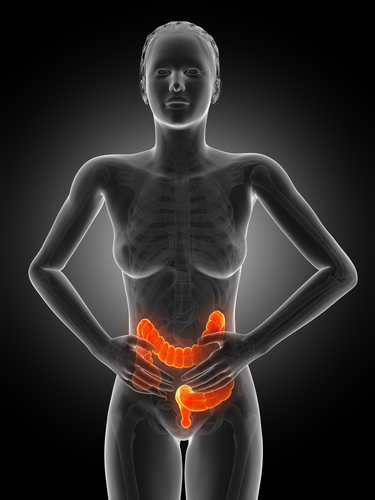New research revealed that fecal calprotectin levels may be a biomarker for assessing Crohn’s disease after intestinal resection. The study entitled ”Measurement of Fecal Calprotectin Improves Monitoring and Detection of Recurrence of Crohn’s Disease After Surgery” was published in Gastroenterology by Emily K. Wright from the Department of Gastroenterology, St Vincent’s Hospital and University of Melbourne in Australia, along with colleagues.
Among patients with Crohn’s disease, 70% of them will need intestinal resection during their lifetime, and within this group, around 70% will require a second surgery. Early postoperative disease recurrence is normally identified by endoscopy and its severity correlates with the subsequent clinical outcome. Endoscopy has been the standard procedure for detecting and quantifying bowel inflammation, but is expensive, work intensive, difficult for the patient, and has some risk. Therefore, there is an urgent need to identify alternative biomarkers that would help to follow postoperative disease recurrence. However, until now there has been no simple diagnostic test validated against endoscopy in large populations to screen postoperative disease recurrence.
Calprotectin is a member of the S100 family of calcium binding proteins and is abundant in all body fluids. Its levels correlate to the grade of inflammation. Fecal calprotectin (FC) has been shown to replicate endoscopic disease activity. FC has been shown to be more sensitive than Crohn’s Disease Activity Index (CDAI) or C-reactive protein (CRP), a serum biomarker of inflammation, at detecting inflammation, and a consistent surrogate marker of mucosal healing in patients with Crohn’s disease.
The research team analyzed data prospectively collected from 135 patients, where 44% were men with an average age of 36 years that were recruited for the POCER study, a randomized controlled trial done at multiple centers in Australia and New Zealand. In this clinical trial, postoperative endoscopy was performed to assess and treat early mucosal recurrence. The protocol consisted of measurements of fecal calprotectin, C-reactive protein and CDAI at several timepoints during the study period, and ileocolonoscopies were done 6 and 18 months after surgery. In this present study, the researchers determined whether fecal calprotectin, C-reactive protein or the Crohn’s disease activity index (CDAI) could be used to precisely reflect the existence and severity of recurrent CD and envisage future recurrence after intestinal resection.
Drs. Alain M. Schoepfer and James D. Lewis, respectively from Centre Hospitalier Universitaire Vaudois in Switzerland and Perelman School of Medicine at University of Pennsylvania in Philadelphia wrote in an editorial that previously the use of FC in assessing postoperative recurrence has been controversial, mainly due to the small size of the studies performed, but the results from the present study are strengthened due to its large size, prospective quantifications, endoscopic validation, and longitudinal inter-individual quantifications of FC.
Overall, fecal calprotectin quantification when used in early recurrence and in monitoring the response to treatment is a better serum biomarker of inflammation than CRP and the clinical index CDAI. Importantly, fecal calprotectin testing is a non-invasive, easy and cheap method that can be done frequently. Calprotectin testing can be included in the type of postoperative management algorithm shown in the POCER study to diminish postoperative recurrence.

